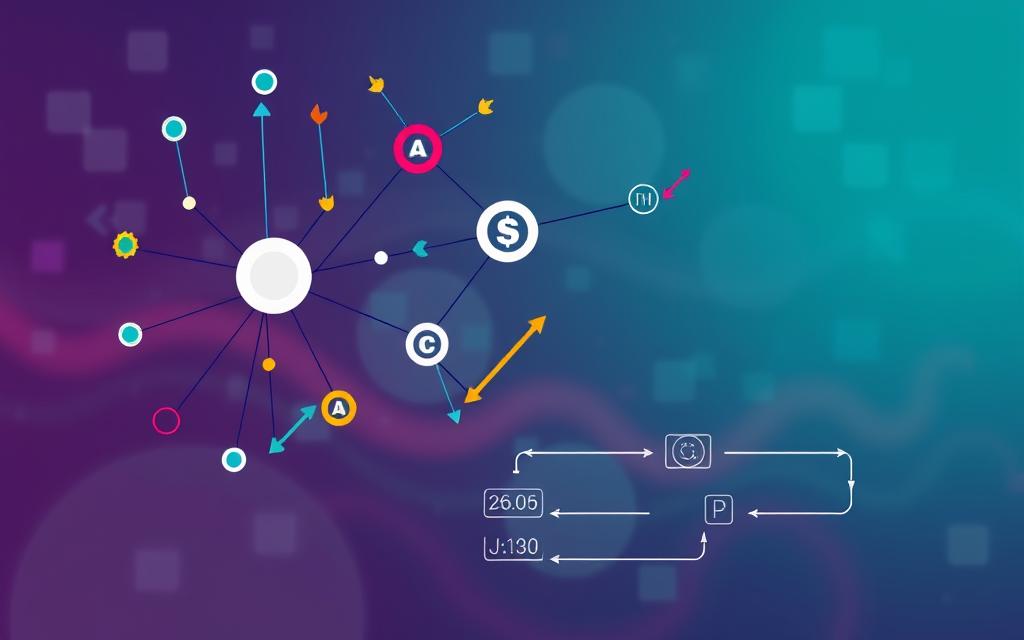Welcome to your journey into the world of version control for beginners. If you’re new to coding or software development, understanding version control is vital for managing your code efficiently. Version control systems like Git are essential tools that help software teams to reduce development time while increasing successful deployments. In fact, statistics show that at least 70% of software development teams utilize some form of version control to effectively manage changes to their source code.
Using a version control system can cut down on bugs by over 50%, allowing teams to efficiently trace changes and resolve conflicts before they become issues. Moreover, around 90% of developers agree that version control notably enhances coding collaboration, minimizing the potential for conflicts created by multiple contributors. With over 40 million users globally, Git stands out as the most popular version control system, reflecting its critical role in modern software development.
This guide will provide you with essential insights into effectively utilizing Git and comprehending the principles of version control. Get ready to enhance your skills and streamline your coding projects with the help of these powerful tools!
Introduction to Version Control
Understanding how version control systems work can tremendously enhance your software development workflow. These systems help track changes to files and documents over time, allowing you to recover previous versions when mistakes occur. Familiarizing yourself with version control can make a significant difference in the way you handle source control in your projects.
Understanding the Basics of Version Control
Version control refers to the process of managing changes to files, particularly in software development. Without such a system, projects can become disorganized, especially as they grow and evolve. The primary types of version control include local, centralized, and distributed systems, with distributed systems like Git being especially important for teamwork. Essential features of version control systems encompass:
- Backup and Restore: Recover files as they were at specific times.
- Synchronization: Ensure all team members access the latest version.
- Short-term Undo: Quickly revert to the last known good version.
- Long-term Undo: Access earlier versions even made a year ago.
- Track Changes: Log messages explaining changes for context.
- Track Ownership: Associate each change with a user’s name.
- Sandboxing: Make isolated changes before integrating them.
- Branching and Merging: Modify code in separate areas before combining it back.
Why Version Control is Essential for Developers
Using version control systems like Git is crucial for enhancing collaboration among developers. The scalability of such systems allows teams to handle large projects efficiently. When you make changes in a version-controlled setting, actions such as check-ins create new versions with a history of modifications. This aspect not only improves tracking but also fosters strong documentation practices through detailed check-in messages.
In an environment where multiple developers work together, version control minimizes conflicts. Studies show that teams utilizing these systems can experience a 25% reduction in code conflicts and a 35% improvement in recovery time from bugs. With Git being the most popular choice, boasting over 70% market share among developers, it is evident that effective source control is integral to modern software practices.
What is Git?
Git is a powerful distributed version control system that has become an essential tool for developers around the world. It enables multiple contributors to work independently on a project while ensuring that changes can be merged seamlessly, enhancing collaborative coding efforts. Let’s explore the evolution of Git and its key features that make it stand out in the realm of version control.
The Evolution of Git as a Version Control System
Developed by Linus Torvalds in 2005, Git originated from the need for a more robust and efficient tool to manage source code. Before Git, centralized version control systems (CVCSs) dominated the landscape, but they posed significant risks, such as server failures that could affect all users. In contrast, Git operates on a distributed version control model, where each user has a complete copy of the repository on their local machine. This innovation substantially reduces the risk of data loss and supports collaborative coding practices among teams.
Key Features of Git
Git boasts several features that enhance its functionality as a distributed version control system:
- Branching and Merging: Developers can create separate branches for new features or fixes, allowing them to work without impacting the main codebase. Merging these branches back is straightforward, promoting seamless integration.
- Full Repository Copies: Each user maintains a complete copy of the project repository, making it easier to recover lost files and maintain data integrity.
- Efficient Collaboration: Teams can execute multiple workflows simultaneously, increasing project efficiency by up to 50%.
- Change Tracking: Git tracks changes meticulously, allowing users to revert to previous versions and view commit histories. The unique commit hash system offers a precise way to identify changes over time.
- Configurable Commands: Commands for user setup and file management are intuitive. For example, `$ git add` is used to add files to the staging area, while `$ git commit -m “message”` documents changes in a clear manner.
With a reported user growth rate of approximately 25% each year and about 70% of software development teams choosing Git as their preferred version control system, its importance in the tech sector is undeniable. As of 2023, Git has solidified its status as the leading distributed version control framework.
| Feature | Description |
|---|---|
| Branching and Merging | Facilitates the creation of multiple development paths, improving workflow. |
| Full Repository Copies | Minimizes data loss risks with local copies for each user. |
| Efficient Collaboration | Enables simultaneous workflows, boosting project efficiency significantly. |
| Change Tracking | Keeps a detailed history of all changes, allowing for easy reversion. |
| Configurable Commands | Simple command structure for managing files and version control tasks. |
These features collectively contribute to Git’s reputation as a reliable tool, making it an integral part of modern collaborative coding practices. Understanding Git will empower you to enhance your version control capabilities and streamline your development processes.
Version Control for Beginners
Embarking on your journey with Git requires a few foundational steps to ensure smooth sailing. This section will guide you through Git installation and the importance of configuring your setup for successful repository management.
Getting Started with Installation and Setup
To get started with Git, your first task is downloading and installing the software. You can find the installation files on the official Git website. Once you have chosen the version that matches your operating system, proceed with the installation by following the prompts.
After completing Git installation, the next critical step involves configuring your Git environment. Setting up your username and email is essential for identifying your contributions within collaborative projects. This configuration lays the groundwork for effective repository management.
The Importance of Configuring Git for First-Time Users
Configuring Git before embarking on your version control experience provides many benefits. Not only does it help prevent confusion in team settings, but it also enhances your overall experience as a user. By familiarizing yourself with essential commands, you’re better prepared to navigate through repositories successfully.
Here are some beginner-friendly tips to keep in mind during your initial configuration:
- Always set your user name and email address using
git config --global user.name "Your Name"andgit config --global user.email "youremail@example.com". - Consider setting up SSH keys for secure communication with your remote repositories.
- Learn the purpose of basic commands like
git pull, which acts as a combination ofgit fetchandgit update.
As you progress in repository management, remember that frequent updates and sharing changes with teammates can significantly reduce conflicts. Git’s structure allows individuals to work simultaneously without interference, but clear communication remains pivotal. By mastering these initial steps, you’ll build a solid foundation for effective version control.
Utilizing Git for Repository Management
When embarking on your journey with Git, mastering repository management is crucial. This skill allows you to keep a clear and organized history of project changes while facilitating collaboration. Here’s how to set up your Git repository and manage your files efficiently.
How to Create a New Git Repository
Creating a new Git repository is the first step towards effective version control. To start, navigate to your desired project directory in your terminal or command line interface. Run the command git init. This command initializes a new Git repository, establishing a dedicated space for your project.
Once your repository is created, it’s important to establish a structured workflow. A common practice is to include a README.md file that outlines your project, providing context for collaborators. This document typically contains essential information about the project’s purpose and usage.
Staging Files and Committing Changes
After creating your repository, the next steps involve staging files and committing changes. Staging helps you prepare your files for a commit. Use the command git add to specify which files will be included in your next commit. This process allows you to organize and refine your commits effectively, managing the clutter often caused by multiple similar files.
Once you have staged your files, it’s time to save your progress. The command git commit -m "Your commit message" captures a snapshot of your changes. Each commit serves as a historical record of your project, enabling you to revert to previous states when necessary. Always remember to use descriptive messages in your commits; this practice aids in tracking the project’s evolution over time.
| Command | Description |
|---|---|
git init |
Initializes a new Git repository. |
git add |
Stages specified files for the next commit. |
git commit |
Saves a snapshot of staged changes. |
git status |
Displays the current state of the repository. |
git checkout -b <branch-name> |
Creates a new branch and checks it out. |
By mastering these fundamental aspects of repository management within Git, you set a solid foundation for your version control practices. The process of staging files and committing changes becomes second nature, leading to a more organized and efficient workflow.
Conclusion
Understanding and implementing version control is essential in today’s software development landscape. Tools like Git not only help you manage your code efficiently, but also enhance your capability for coding collaboration. With Git, you maintain a comprehensive historical record of your project’s evolution, ensuring that every member of your team can stay in sync and work without redundancy.
This guide is your starting point toward mastering version control. By implementing the strategies and practices discussed, you can significantly boost your confidence in collaborating on projects. Whether you’re working independently or as part of a larger team, Git will streamline your workflow and enable you to navigate the complexities of development with ease.
As you embrace Git and all of its features, remember that the journey of mastering version control is continuous. Each command you learn, like `git commit -m ‘commit message’`, plays a vital role in your coding projects’ success. By harnessing the power of Git, you’re equipping yourself with the tools needed for efficient and collaborative software development.







